|
Centrip Editorial Board
Exploring Nishio City: From Matcha Green Tea to Glass Art

Nishio City is in the Mikawa area in the western part of Aichi Prefecture. Recently, in addition to traditional tourist attractions based on its unique food cultures, such as matcha green tea and miso (bean paste), the city has been attracting attention for its variety of photo-worthy spots and cultural facilities and is now firmly established as a popular tourist destination in the Chubu and Tokai areas.
The center of Nishio City is one hour from Nagoya to Nishio Station via National Route 23 (Meiho Road) when using a car and about 50 minutes from Meitetsu Nagoya Station to Nishio Station on the Meitetsu Line when using public transportation.
This article introduces five spots to visit now in the urban area of Nishio City, including the Mikawa Crafts and Glass Art Museum with its giant kaleidoscope. Also, see Matcha Sweets Experience & Walking around Sakujima, an Island of Art, which introduces how to find your way around Nishio City with a focus on Sakujima, and Tombolo Higata and Mer Brillante in Higashi Hazu, introducing the miraculous scenery that appears due to the tombolo phenomenon.
Five must-visit spots in Nishio for sightseeing
- Mikawa Museum of Glass Art: A photogenic spot
- Shokakuen: Taste the best green tea town in Japan, Nishio.
- Uotora: Eating Matcha at the birthplace of Nishio's Tencha-meshi (powdered green tea rice)
- Miso Park Hatoya: A 100-year-old miso warehouse that provides insight into Nishio's brewing culture
- Iwase Bunko: Japan's first antiquarian book museum
Mikawa Museum of Glass Art: A photogenic spot
The Mikawa Museum of Glass Art is one of the most famous photo spots in the Chubu and Tokai areas. The contrast between the geometric stained glass patterns and the silhouettes of people makes it a popular spot, especially on social networking sites.
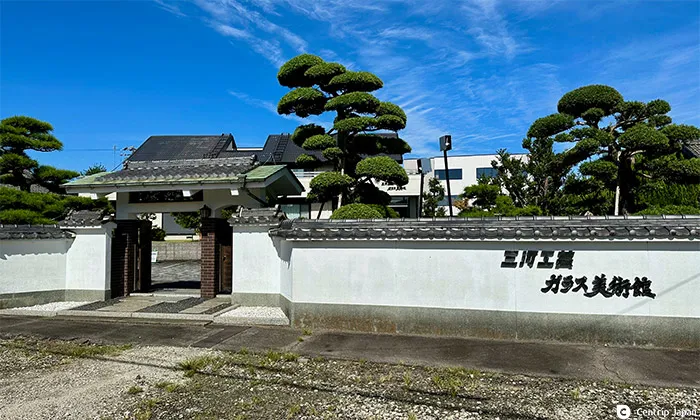 Unique Japanese-style gate
Unique Japanese-style gate
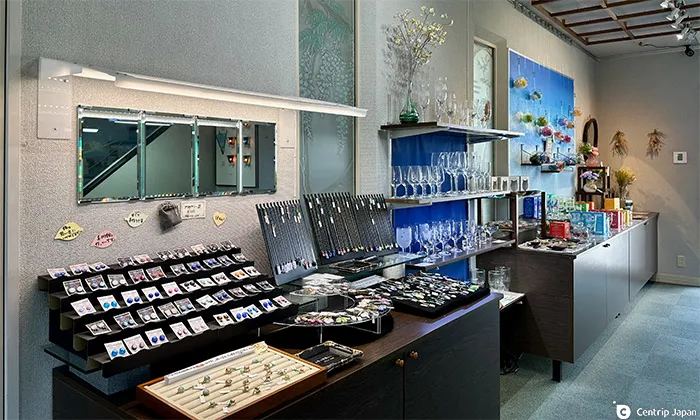 Shop selling original goods
Shop selling original goods
The Mikawa Museum of Glass Art opened in 2000 with many unique glass artifacts. Besides exhibits, they sell original goods at the on-site store. Visitors can experience glass crafts such as stained glass and kaleidoscope making (reservations are required for the hands-on experience).
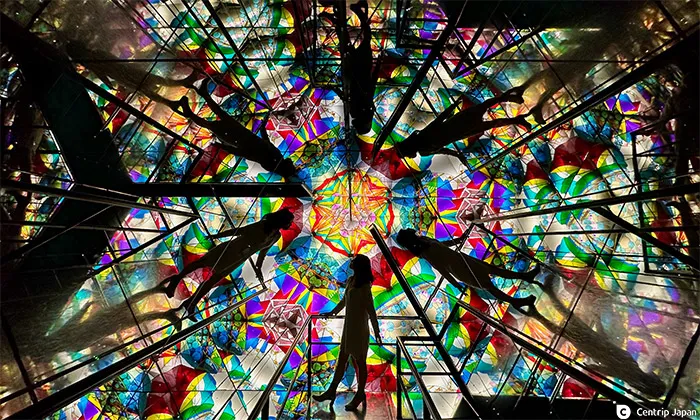 Kaleidoscope patterns that change from moment to moment
Kaleidoscope patterns that change from moment to moment
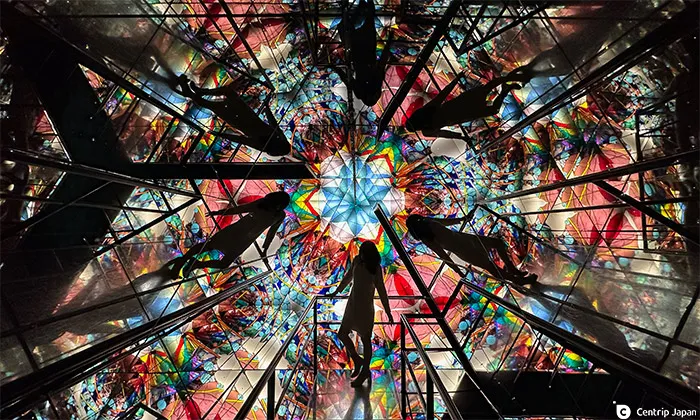 Pose for a photo and take a picture
Pose for a photo and take a picture
The museum's centerpiece is a giant kaleidoscope called the Sphere. This idea was conceived by Director Kamiya who imagined the joy of being able to step into a kaleidoscope. At 7.3 m long, 3.1 m wide, and 2.55 m high, the giant kaleidoscope was listed in the 2002 edition of the Guinness Book of Records as the world's largest kaleidoscope.
As soon as you step into the kaleidoscope, the stained glass windows start spinning with sounds reminiscent of outer space, and reflections from the 54 mirrors create various patterns. The show's second half, when the entire room brightens, makes the silhouettes of people reflect off the glass. It is the best time to take a picture.
You can take as many photos as you want, but since this is a popular spot, there is often a long line waiting for their turn. As of October 2022, video recording in the kaleidoscope is now permitted. Visitors are encouraged to capture their favorite moments from the video.
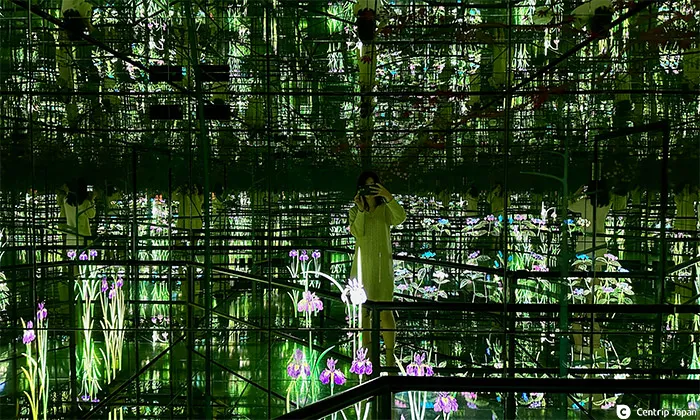 Scene of lustrous hydrangea and irises
Scene of lustrous hydrangea and irises
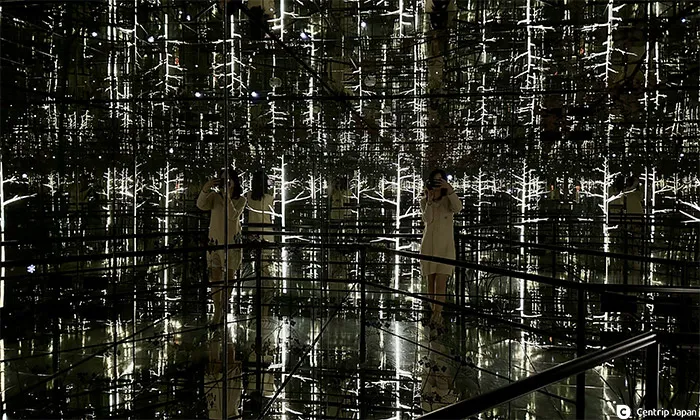 The scene eventually switches to the ice trees in winter
The scene eventually switches to the ice trees in winter
Another highlight is the Sculptured Mirror Room. Mirrors covering the room make it impossible to tell where walls start and mirrors end. It leaves visitors feeling like they have wandered into a mysterious universe. The mirrors in the room are beautifully sandblasted and painted with the theme of four seasons, and the room is also a favorite spot for taking impressive selfies.
Shokakuen: Taste the best green tea town in Japan, Nishio.
Nishio City is the leading producer of Matcha (powdered green tea) in Japan. The amount of tea produced in Nishio before it is ground into matcha accounts for about 20% of the nation's total production. Matcha production in Nishio is said to have flourished due to the rich soil provided by the Yahagigawa River and the abundance of granite mined nearby, which is necessary for tea mortar production.
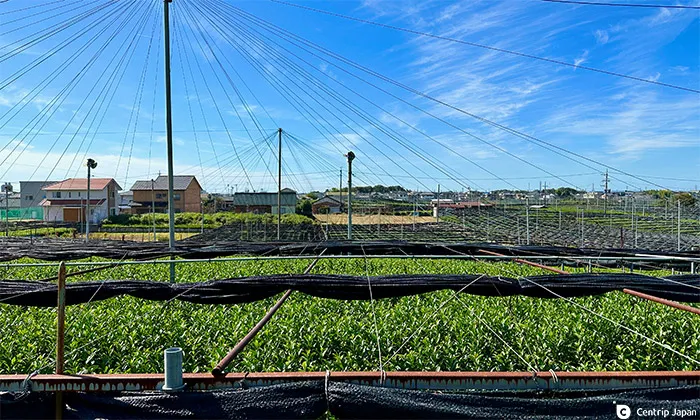 Tea fields seen from Inariyama Tea Garden Park
Tea fields seen from Inariyama Tea Garden Park
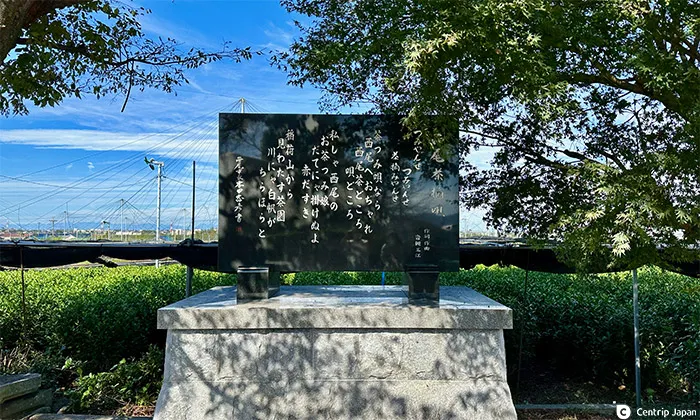 Inscription with lyrics of Nishio tea picking song
Inscription with lyrics of Nishio tea picking song
The Inariyama Tea Garden Park boasts a panoramic view of Nishio's tea plantations. The park is on top of a small hill near the banks of the Yahagigawa River. During the tea picking season in May, visitors can watch the pickers working amidst the beautiful green rice paddies.
In addition, there are several tea stores in Nishio City, each with its unique flavor, offering different ways to enjoy Nishio's matcha tea. For this report, we visited Shokakuen, one of Nishio's representative long-established tea shops.
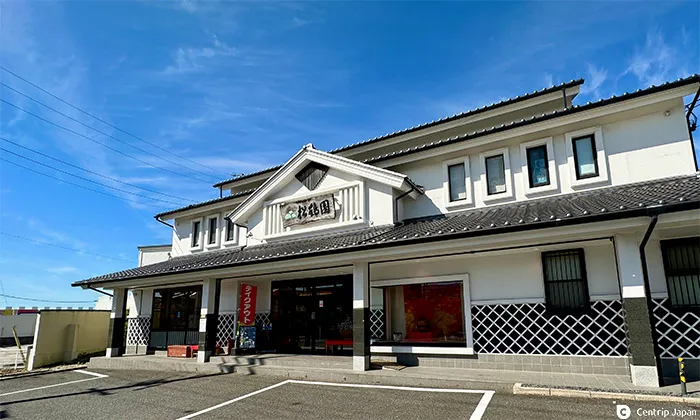 Shokakuen's main storehouse
Shokakuen's main storehouse
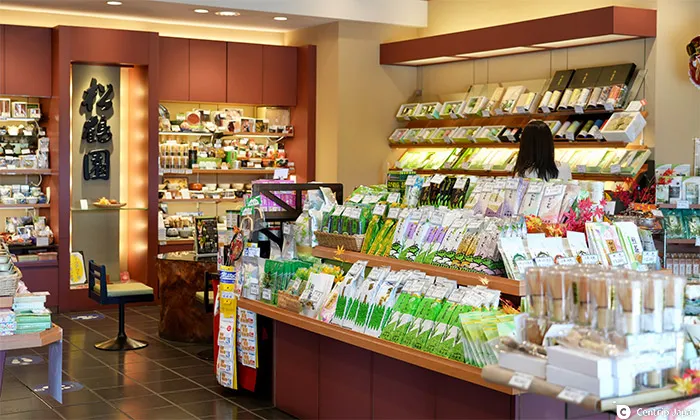 Various teas and sweets
Various teas and sweets
Shokakuen sells original products like matcha, green tea, and tea-based confections. The store also has a Sayu, which offers matcha green tea, wagashi (Japanese sweets), and the very popular matcha parfait.
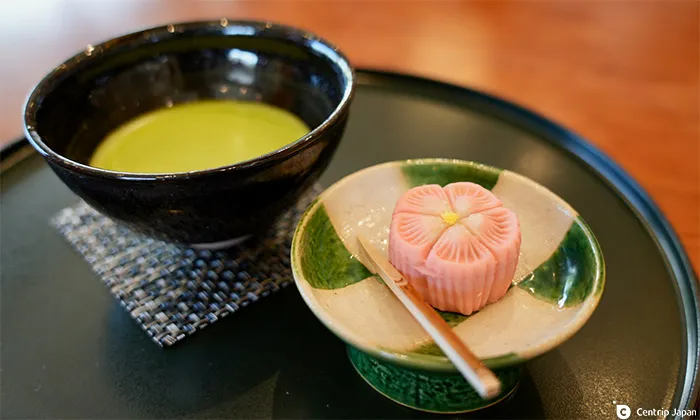 Matcha green tea served with Japanese sweets is exceptional
Matcha green tea served with Japanese sweets is exceptional
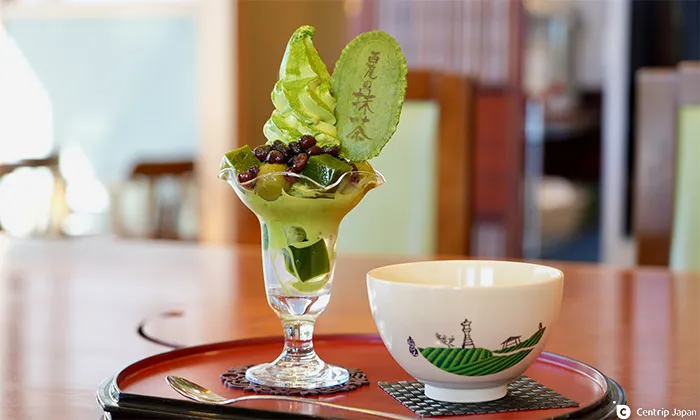 ¥1,580 for the popular Nagomi Matcha set
¥1,580 for the popular Nagomi Matcha set
Group reservations are required to tour the matcha factory and experience the process of making matcha by grinding powdered green tea on a millstone (reservations for groups of 10 or more adults; ¥1,900 per person, including matcha and snacks).
Uotora: Eating Matcha at the birthplace of Tencha-meshi (powdered green tea rice)
Japanese Cuisine Uotora offers matcha drinks and food. If you are looking for lunch with everything Nishio's has to offer, this is the perfect place for you.
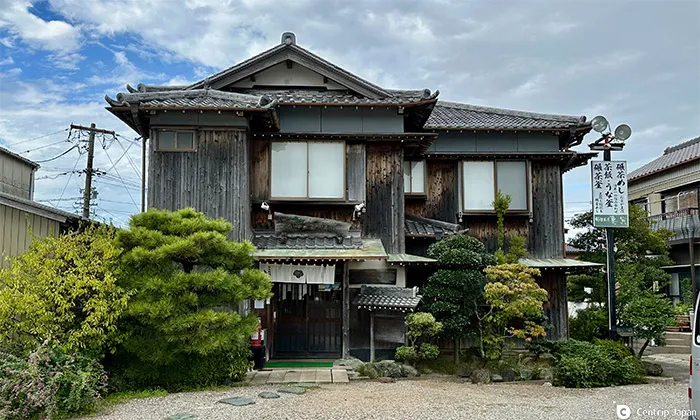 Exterior view of Uotora
Exterior view of Uotora
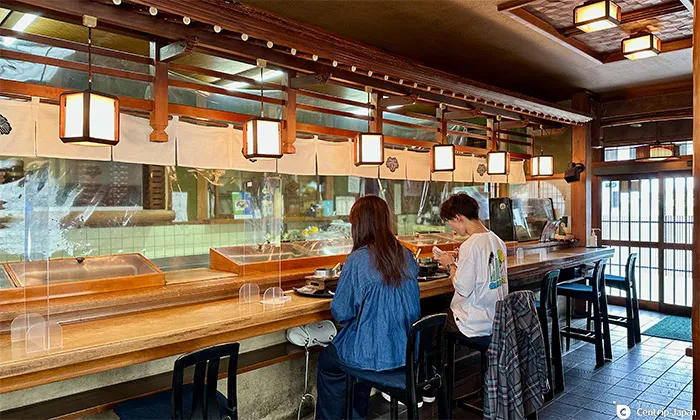 Large tatami room available in addition to counter seating
Large tatami room available in addition to counter seating
Uotora's signature Tencha Meshi is a dish of cooked rice with sea bream, topped with Tencha tea, so thick you can't see the rice underneath. The dish is visually impressive, and when you open the lid, the fragrant aroma of tea fills the air, whetting your appetite. Mix the rice in the pot well and serve with your favorite condiments.
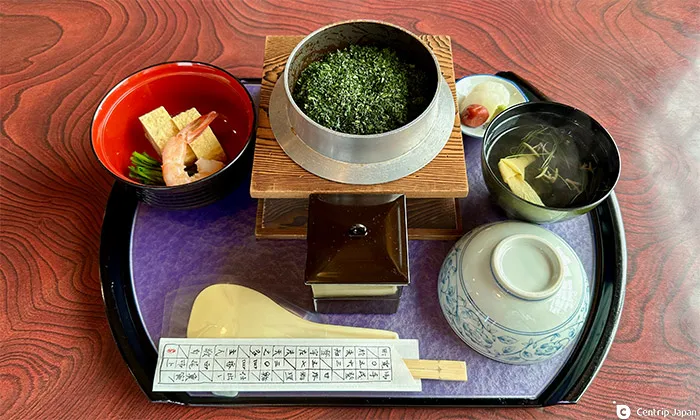 The standard Tencha Meshi
The standard Tencha Meshi
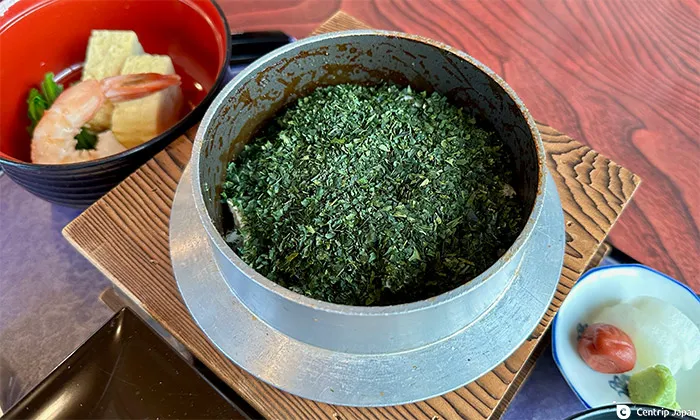 Lots of Tencha on the table
Lots of Tencha on the table
Since it takes about 20 minutes for the rice to cook after ordering it. So contact the restaurant in advance to let them know when you will be coming.
Miso Park Hatoya: A 100-year-old miso warehouse that provides insight into Nishio's brewing culture
Aichi has a mild climate, good-quality water, and an environment conducive to fermentation. The brewing of sake, vinegar, mirin, soy sauce, miso, and other products has flourished in the prefecture since early times. Nishio City, along with the neighboring city of Okazaki, is famous as the center of soybean miso (red miso). Soybean miso is an indispensable ingredient in miso katsu, dote-ni, miso nikomi udon, and other dishes that makeup Aichi's food culture.
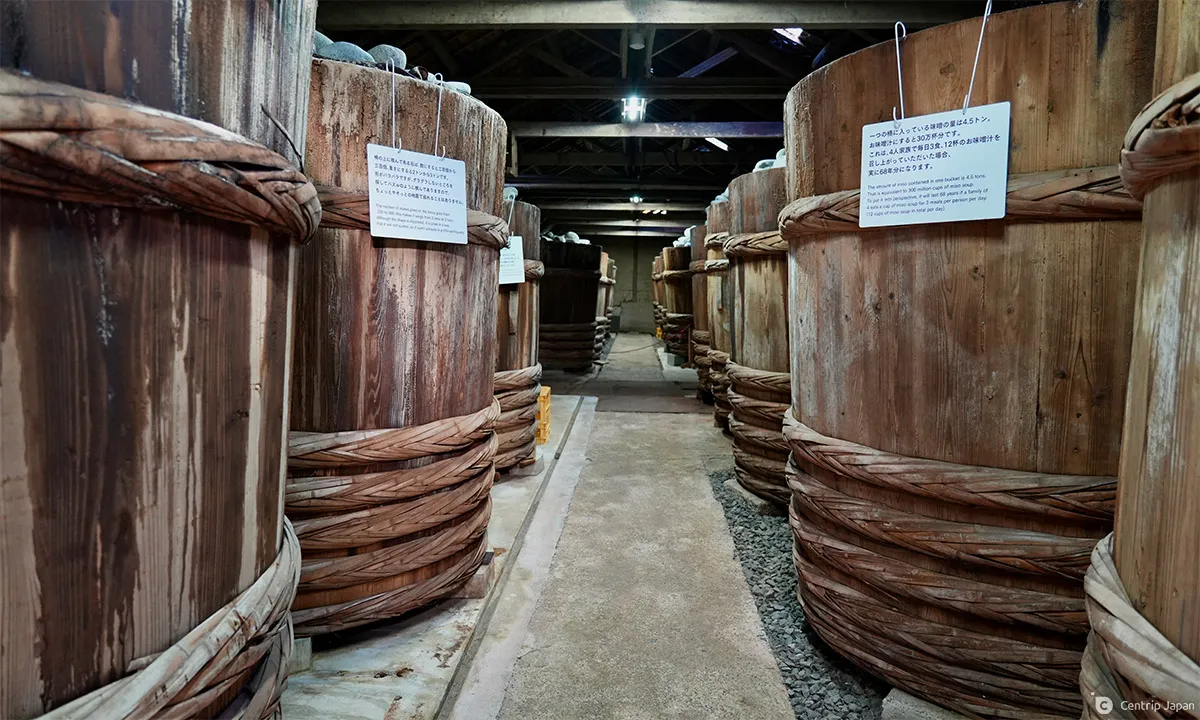 The sight of the warehouses lined with impressive wooden vats
The sight of the warehouses lined with impressive wooden vats
Visitors can observe the production process of soybean miso and get a taste of Nishio's brewing culture at Miso Park Hatoya. Hatoya, founded in 1861, brews soybean miso and white soy sauce. The founding family, Toriyama, were the lords of Nishio Castle, the symbol of Nishio City, during the Edo period (1603-1868).
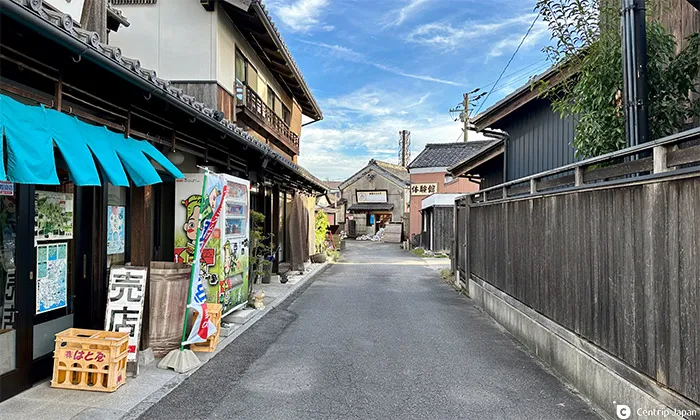 The retro atmosphere of Miso Park is delightful
The retro atmosphere of Miso Park is delightful
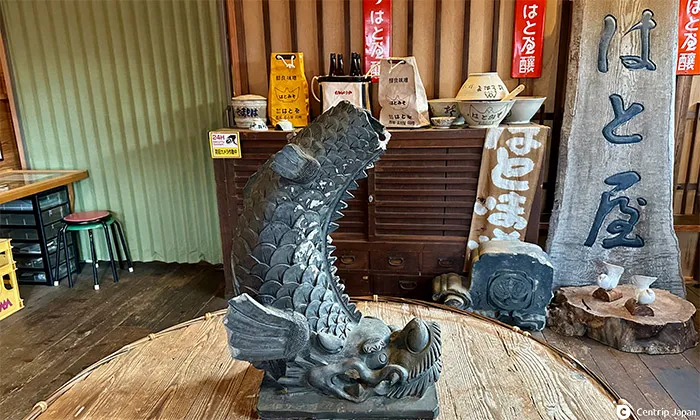 Nishio Castle's Shachihoko
Nishio Castle's Shachihoko
Miso Park opened in 2009 as a place for people to enjoy miso. Visitors can tour the inside of the storehouse and observe the large wooden vats and valuable materials used in the fermentation process of miso.
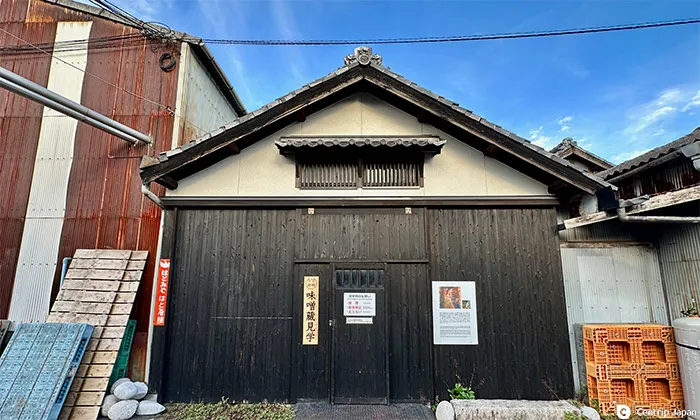 Tours are available in the warehouse outside of working hours
Tours are available in the warehouse outside of working hours
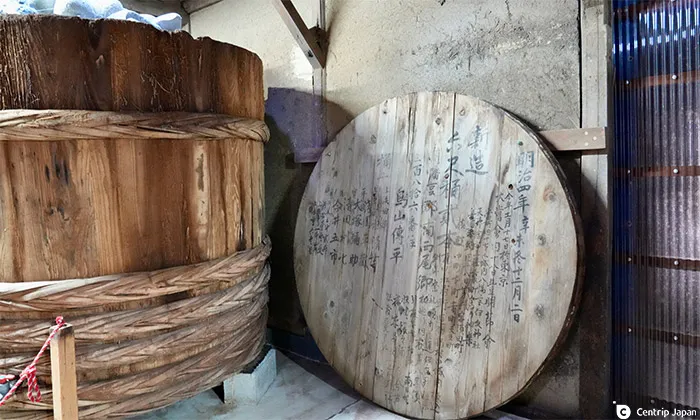 Bottom boards of wooden barrels used for more than 100 years
Bottom boards of wooden barrels used for more than 100 years
As you enter the miso warehouse, built in 1904, the size of the wooden barrels and the stones piled on top of the barrels are astonishing. Inside the storehouse is a large bottom plate used on the wooden barrels for over 100 years is also on display.
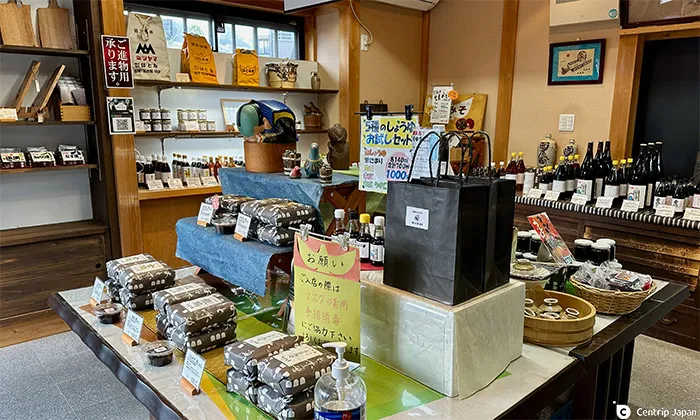 Store with original products
Store with original products
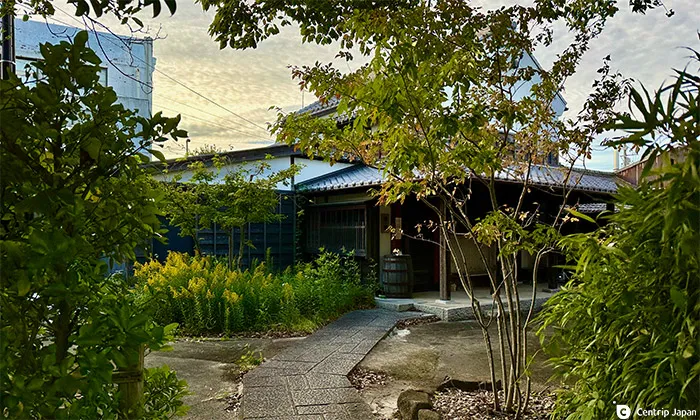 Bar Den no Kura renovated from an old warehouse
Bar Den no Kura renovated from an old warehouse
Visitors can tour Miso Park any time, and reservations let you experience making miso-maru (miso soup stock for one person) using a combination of miso and dried ingredients or making original dressings for a fee.
The bar Den no Kura is an old remodeled warehouse on the premises of Miso Park. There are plans to open other restaurants in old private houses with miso and fermented food as themes, and the facility is likely to become a place to enjoy in various ways.
Iwase Bunko: Japan's first antiquarian book museum
Iwase Bunko is a unique museum considered to be the first antiquarian book museum in Japan. It was established in 1908 by Yasuke Iwase, a wealthy businessman in Nishio City, who wanted to contribute to society through books and is now operated as a municipal facility of the Nishio Municipal Government.
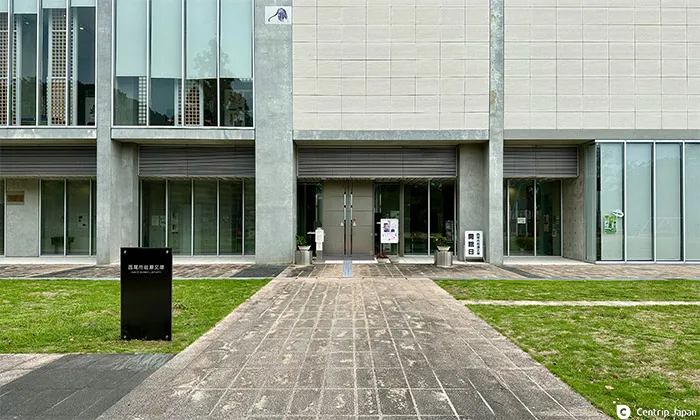 Iwase Bunko won the Aichi Prefecture Architecture Prize
Iwase Bunko won the Aichi Prefecture Architecture Prize
 Permanent exhibition on the history of books in Japan
Permanent exhibition on the history of books in Japan
The Iwase Bunko collection contains 80,000 volumes of books, including important cultural treasures. But the most astonishing part of the collection is that almost all of the books can be touched and viewed by anyone (even visitors to Nishio City).
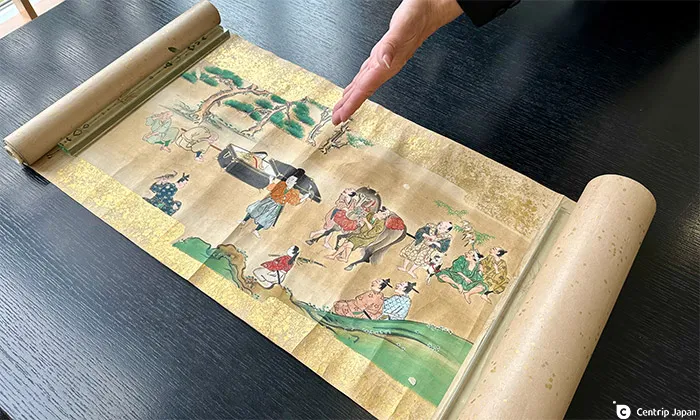 Whispering Bamboo, a beautiful picture scroll
Whispering Bamboo, a beautiful picture scroll
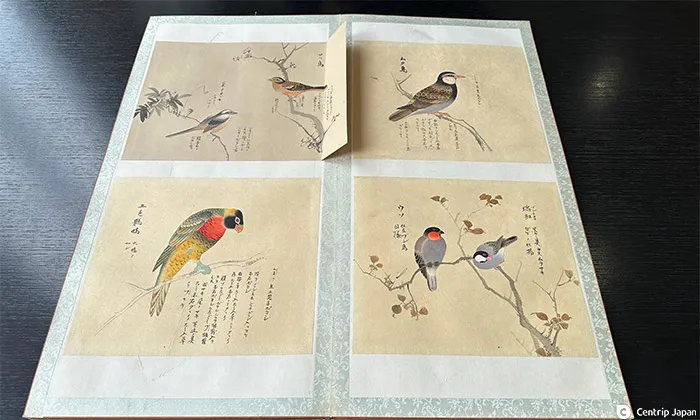 An illustrated book of birds from the Edo period with exquisite drawings
An illustrated book of birds from the Edo period with exquisite drawings
Please feel free to let the curators know what you would like to see. You can ask for anything from a beautiful picture scroll that a princess may have read hundreds of years ago to a book of problems on Japanese mathematics from the Edo period, or even something rare. The curators can also provide suggestions for a variety of books.
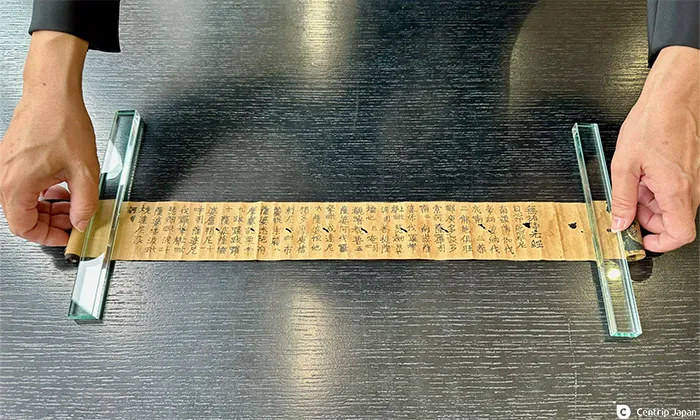 The oldest printed scripture in Japan
The oldest printed scripture in Japan
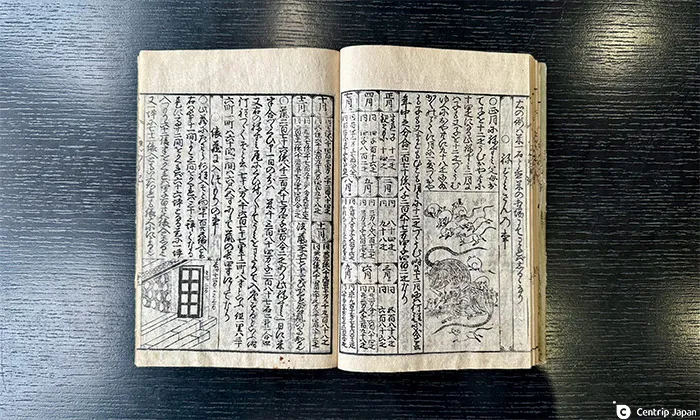 A Japanese math textbook that explains how to calculate rats.
A Japanese math textbook that explains how to calculate rats.
We were introduced to a medieval picture scroll called Whispering Bamboo. As we unfurled the scroll, he meticulously recounted the tale: "A monk enamored with a lovely maiden secretly communicated with her parents at night through a bamboo tube, imploring them to send their daughter in a long box to his temple. While en route to the temple, the daughter was saved by a passing aristocrat, and a cow was substituted in the long box in her stead. The monk was taken aback when he opened the long box."
Iwase Bunko is a one-of-a-kind facility that allows visitors to come into direct contact with valuable Japanese classic books. Amazingly, such a facility operates without an admission fee. If you are interested in Japanese culture, you should visit.
*As of October 2022, the seating capacity in the reading room was decreased to prevent the spread of COVID-19, and reading materials are available only by reservation.
Wrap-up
Did you like this introduction to the standard tourist attractions in the Nishio city center area? Nishio City has a wide variety of places to visit. Ghibli Park, opening in November 2022, is closed, so make sure you take a trip to Nishio.
Click here for tour information on NishioNishio Special Tour
Click here to get the latest information on Central Japan.Centrip Japan - Nagoya and Chubu Information
Aichi Prefecture Special Website

